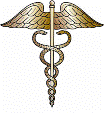
United States Public Health Resources
Date of this Version
12-2006
Abstract
BACKGROUND: National blood donation screening for West Nile virus (WNV) started in June 2003, after the documentation of WNV transfusion-associated transmission (TAT) in 2002.
STUDY DESIGN AND METHODS: Blood donations were screened with investigational nucleic acid amplification assays in minipool formats. Blood collection agencies (BCAs) reported screening results to state and local public health authorities. Donor test results and demographic information were forwarded to CDC via ArboNET, the national electronic arbovirus surveillance system. State health departments and BCAs also reported suspect WNV TATs to CDC, which investigated these reports to confirm WNV infection in blood transfusion recipients in the absence of likely mosquito exposure.
RESULTS: During 2003 to 2005, a total of 1,425 presumptive viremic donors were reported to CDC from 41 states. Of 36 investigations of suspected WNV TAT in 2003, 6 cases were documented. Estimated viremia levels were available for donations implicated in four TAT cases; the median estimated viremia was 0.1 plaqueforming units (PFUs) per mL (range, 0.06-0.50 PFU/mL; 1 PFU equals approximately 400 copies/mL).
CONCLUSIONS: National blood screening for WNV identified and removed more than 1,400 potentially infectious blood donations in 2003 through 2005. Despite the success of screening in 2003, some residual WNV TAT risk remained due to donations containing very low levels of virus. Screening algorithms employing selected individual-donation testing were designed to address this residual risk and were fully implemented in 2004 and 2005. Continued vigilance for TAT will evaluate the effectiveness of these strategies.


Comments
Published in TRANSFUSION Volume 46, December 2006.